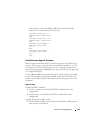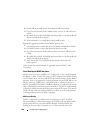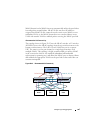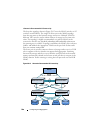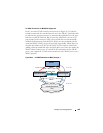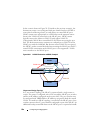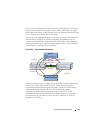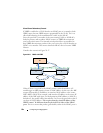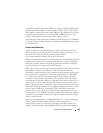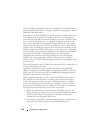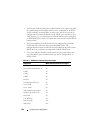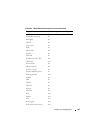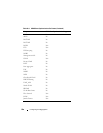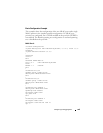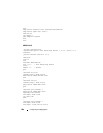
Configuring Link Aggregation 953
transmitted with the source MAC address as the physical MAC address and
not the virtual MAC address. In the example in Figure 28-17, if the virtual
MAC address is used as the source MAC address in the ARP from P to A, then
S will consume the packet, as it is operationally a VRRP master too. The
packet is forwarded to P if the physical MAC address is used.
Note that the VLANs connecting A and B to the MLAG peers are extended to
R1. P and S do not actually route packets. Within the MLAG domain, packets
are switched only.
Caveats and Limitations
Traffic to and from non-redundant ports is filtered and never crosses the
MLAG peer-link, and such ports/VLANs need to obtain connectivity via an
alternative other than the MLAG-connected ports/VLANs.
Port-channel numbers within a VPC must be identical.
MLAG non-redundant ports do not run spanning tree and should be used and
connected with caution. It is recommended that these ports be configured
and used as routing interfaces on point-to-point links and only configured
with VLANs that are not part of the MLAG domain.
MLAG peer switches must be the same model and have the same port count
and module occupancy (if modules are used in the MLAG domain).
Specifically, a port referred to on the secondary must be present on the master
to be accepted for configuration. This is due to the table sizes (ARP, FDB,
etc.), where the primary switch may learn more MAC addresses than the
secondary switch and then, upon failover, the secondary will not be able to
forward traffic to all of the addresses supported by the primary switch. It is a
requirement of a port-channel that the link members operate at the same
duplex and speed settings. In addition, copper ports have larger latencies than
fiber ports. If fiber and copper ports are aggregated together, packets sent over
the fiber ports would arrive significantly sooner at the destination than
packets sent over the copper ports. This can cause significant issues in the
receiving device, as it would be required to buffer a potentially large number
of frames. Devices unable to buffer the requisite number of frames will show
excessive frame discard.
Routing is not supported across multiple MLAGs (i.e., in two-tier topology).
This is a fundamental limitation of MLAG, which is intended as a
replacement for other, less efficient L2 topologies. Should a multitier L3
topology be desired, other well established and well understood techniques,



